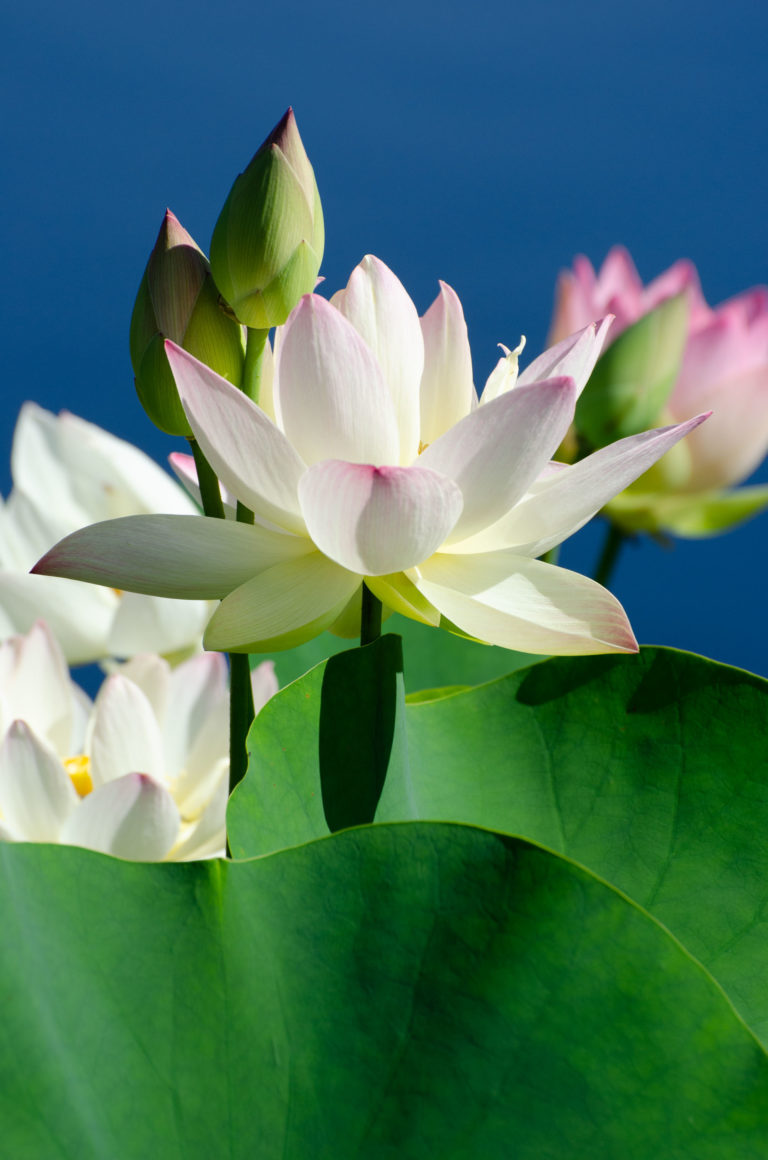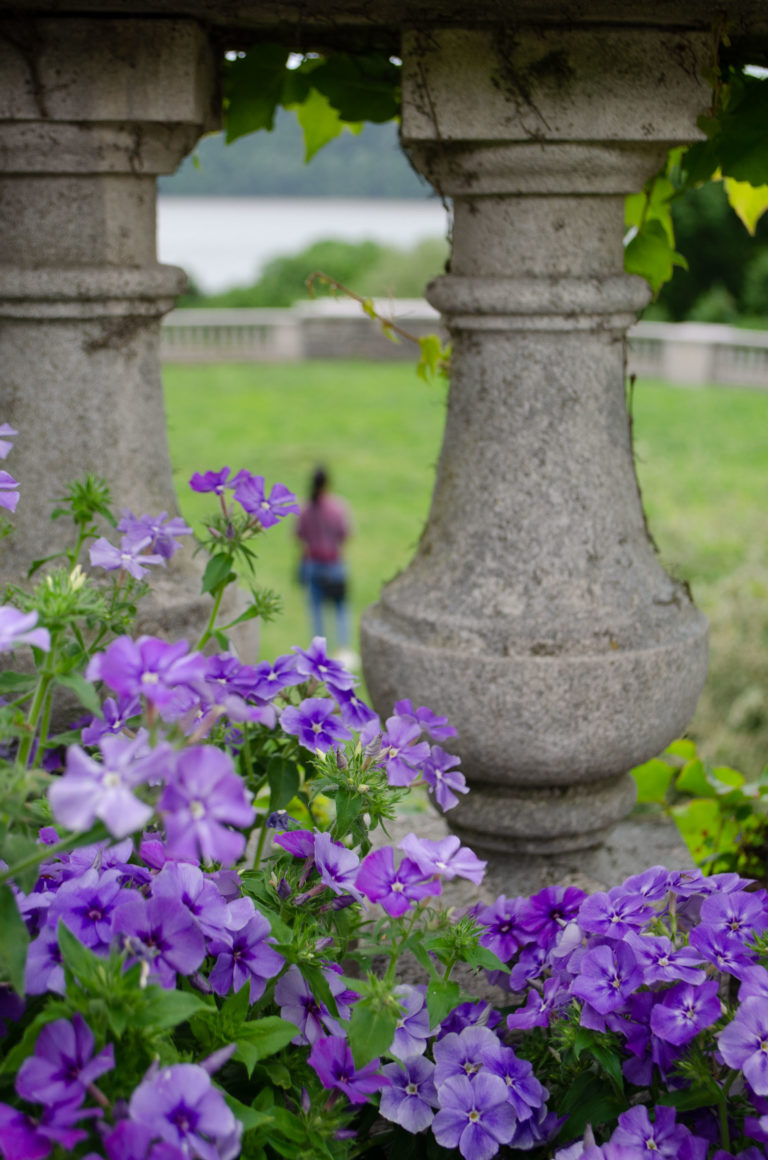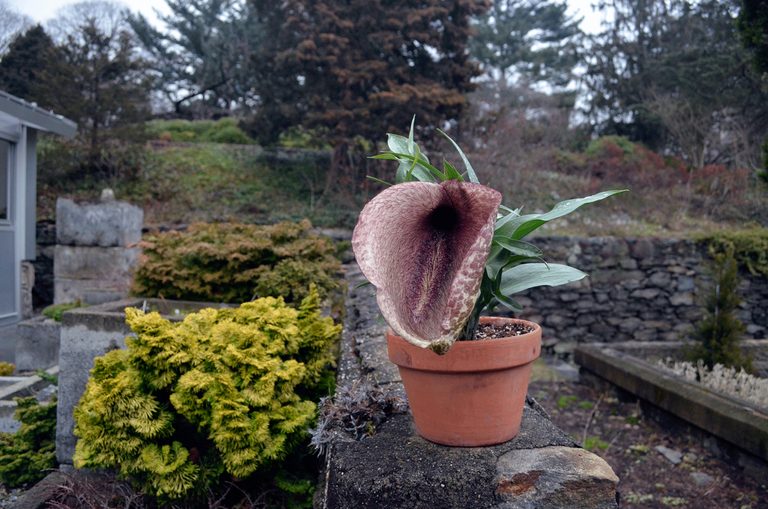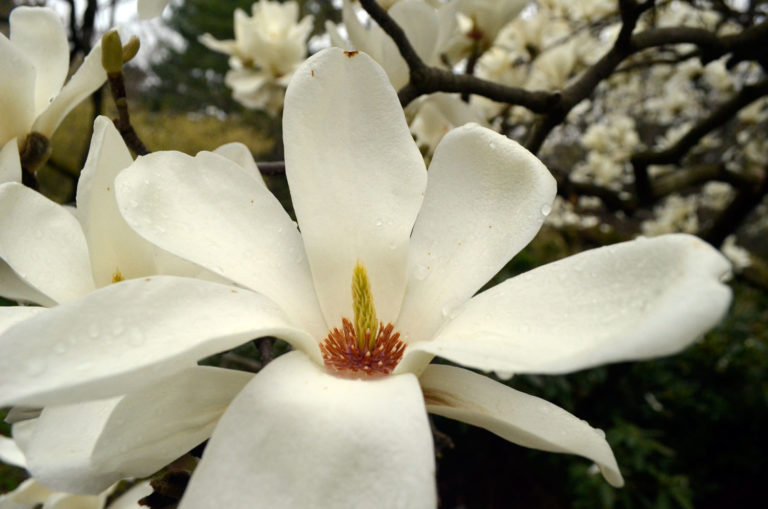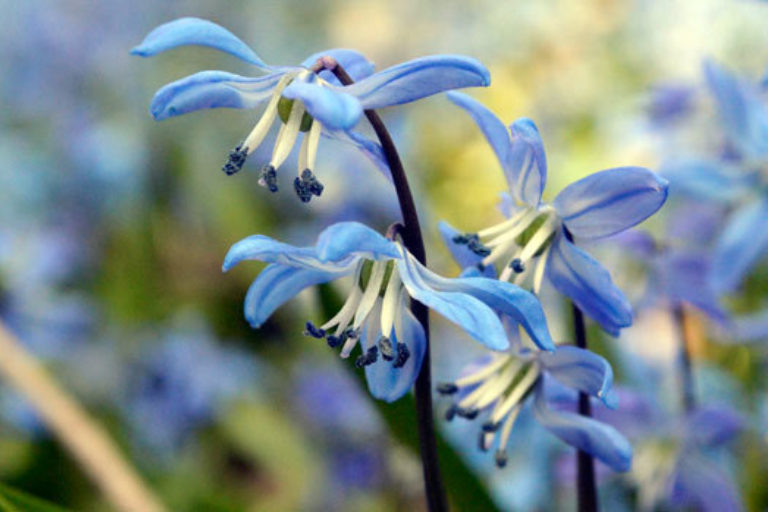
Scilla siberica (Siberian squill)
April 13, 2018The celebrated, sweeping, blue carpets at Wave Hill this time of year are usually attributed to the thousands of lesser glory-of-the-snow (Chionodoxa sardensis) covering the hillsides. But, as is often the case in nature and gardens, the truth is a little more complicated. Scattered among these teeming hoards, you might spot the odd clump of Siberian squill (Scilla siberica).
Both are small, blue-flowering, bulbous plants in the lily family (Liliaceae), but there are differences. Most obviously, the Siberian squill modestly hangs its head—the first image here— while the glory-of-the-snow keeps its face raised, as shown in the second photo. (“Chin up, Chionodoxa” is a useful mnemonic.)
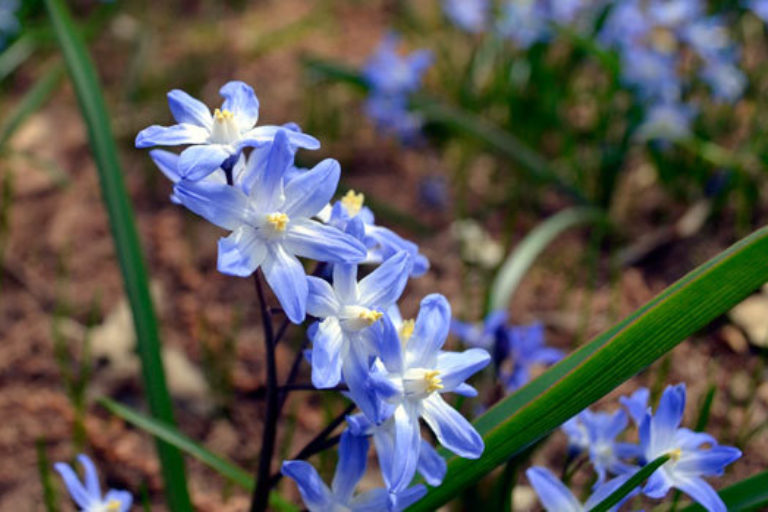
Other differences require closer examination. In glory-of-the-snow, the anthers—the male parts of the flower, which produce pollen—are surrounded by a “cup” composed of flattened, anther filaments. Those of the squill are presented on long, stalk-like anther filaments.
The pollen of the squill is a surprising shade of steel-blue. In fact, it is possible to identify which flowers our honeybees have been visiting by inspecting the pollen baskets on their hind legs: some of them have been returning to the hive with troves of brilliant-blue pollen from this flower. Other flowers blooming now, including glory-of-the-snow and many types of crocus, have pale-yellow to light-orange pollen.
The Siberian squill does not actually come from Siberia. It is native to southern European Russia, across the Caucasus region and into Turkey. The lesser glory-of-the-snow hails from western Turkey—hence the specific epithet of sardensis, meaning “of Sart” (the ancient city of Sardis).
You may find squill here and there in the gardens; these shots were taken along the paths in in the Herbert and Hyonja Abrons Woodland.
By Charles Day, Wave Hill’s former Ruth Rea Howell Senior Horticultural Interpreter.
